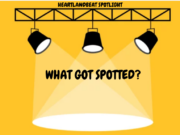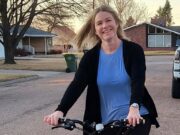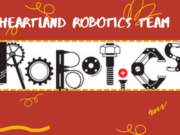| Upcoming Events: Oct. 25: Heuermann Lecture: Mythbusting Cattle and Climate, 2:30 p.m., UNL East Campus Union & livestream, https://heuermannlectures.unl.edu/ Nov. 2, 9, 16, 23: Know Your Options, Know Your Numbers, 9-10:00 a.m. CST, RSVP: https://wia.unl.edu/know Nov. 8: Young, Beginning, Small Farmer Symposium, 9 a.m.-4 p.m., UNL East Campus Union, https://ianr.unl.edu/young-beginner-and-small-farmer-symposium Nov. 12: Dr. Temple Grandin-Kids and Dreams Foundation: Understanding Animal Behavior, 10 a.m., Buffalo Co. Fairgrounds, Kearney Nov. 16: Cover Crop Grazing Field Day, 9 a.m. registration, ENREC near Mead Nov. 16: Crop Science Investigation (CSI) for youth, 4:45-5:45 p.m., RSVP to jrees2@unl.edu Nov. 19: Soil Health Summit Jan. 6: Crop Production Clinic, Mid-Plains Community College, North Platte Jan. 6-7: York Ag Expo, Holthus Convention Center, York Jan. 11: Crop Production Clinic, Northeast Community College, Norfolk Jan. 13: Crop Production Clinic, Holiday Inn Express, Beatrice Jan. 19: Crop Production Clinic, C3 Hotel & Convention Center, Hastings Jan. 21: Crop Production Clinic, ENREC near Ithaca Jan. 25-26: No-till on the Plains Winter Conference, Wichita, KS, http://www.notill.org/upcoming-events Jan. 25: Crop Production Clinic, Younes, Kearney Jan. 26: Crop Production Clinic, Holthus Convention Center, York Feb. 17: Nebraska On-Farm Research Updates, York |
Grateful for some rain! I know many were pushing and hoping to complete harvest before it, yet it’s so good to get some moisture and rest as well.
This week’s CropWatch at https://cropwatch.unl.edu shares several articles about considering nitrogen credits, prices, and cost of production for the 2022 growing season. The UNL budgets have been updated for 2022. A new tool called the Ag Budget Calculator is also available where the UNL budgets are already inputted into it and allow you to alter them to fit your operation. If you don’t already have a system for keeping track of your cost of production per acre, consider checking out the Ag Budget Calculator at: https://cap.unl.edu/abc.
A common conversation this week was around manure use for nutrient management. If a person has access to manure, it’s a great resource! It was interesting to me how many were uncertain about using it. Perhaps part of that is just understanding how nutrients are credited. In general, 70% of the phosphorus and 70-90% of potassium are available the first year. However, nitrogen availability varies more. An important piece to understand is that there is both ammonium nitrogen (from urine) and organic nitrogen (from feces) available in manure. The amount of nitrogen available the first year in the ammonium form depends on the animal source, liquid vs. solid manure, and if the manure is incorporated or not. The amount available from the organic component is determined by mineralization with additional being released in the second and third years. The following article shares on maximizing profitability of manure use: https://go.unl.edu/f946. The following NebGuide does a great job explaining how to determine the amount of crop available nutrients from manure the first through third years after application: https://go.unl.edu/2use.
Another common conversation was around nitrogen management in general…things like should a person switch nitrogen sources for their operations due to price differences between anhydrous and UAN and conversations around how many inputs seem to have to be locked in this time of year vs. can they wait. At the end of the day, each grower will have to determine these things for your own operations, but I’m willing to listen. Ultimately, for operations where you have specific goals you’re striving to achieve and have been in process of altering things through the years to achieve them, I’d encourage you to stay the course and not make drastic changes for one year. If you’ll sleep better at night trying some different things on a field or a few acres, then try them, but perhaps don’t throw out everything you’ve done to this point for one year. It’s anyone’s guess what next spring will bring. This could be a great year for you to consider testing different nutrient rates and/or timings on your farm when you may not have been comfortable doing so in the past. I’ve placed a few on-farm research protocols for consideration at jenreesources.com which can be altered for different application timings, N sources, and rates. There’s also a number of nutrient-management related protocols at: https://cropwatch.unl.edu/farmresearch/extensionprotocols. I realize many of you try things on your own farms. It’d be great for more growers to consider doing these types of studies via on-farm research as that helps all of us have more data that can be shared. I realize the protocols can look daunting, but for the most part, I think the farmers conducting on-farm research would agree they’re really not that complicated. Please contact me or your local Extension educator if you’re interested in any of these!
Lawn Care Fertilizer and Weed Control: Mid-September is the best time to apply fertilizer to cool season lawns. If fall fertilizer has not yet been applied, or a second application is to be made, only use fertilizers with fast release nitrogen sources and make the application before October 31. More information here: Rethinking Fall Fertilization, Nebraska Extension Turf iNfo.
As temperatures become colder, the process of herbicide movement and weed kill slows, but can still be effective as long as the weed has green leaves. Broadleaf weed control is most effective with spot treatments of herbicides applied during fall. When night temperatures begin to fall into the 30s, plants initiate carbohydrate movement into the root system. This increases the movement of herbicide into roots to increase weed kill. Combination herbicides are generally more successful than individual active ingredients in controlling perennial broadleaf weeds. Herbicide applications for perennial weed control can still be made effectively while the following conditions apply: Daytime temperatures are above 50°F, weeds have green leaves and can uptake herbicides, soils are not frozen. More info here: Broadleaf Weed Control, Nebraska Extension Turf iNfo.



































